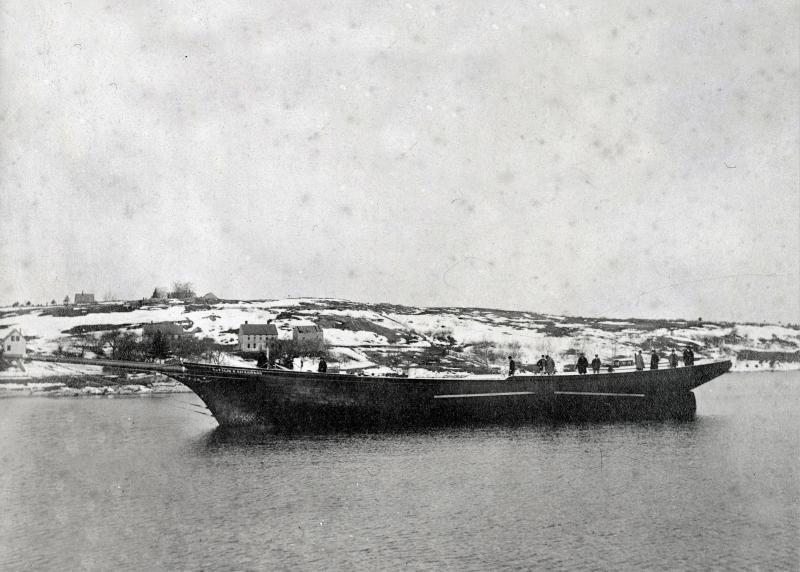Members of the Nickerson family came to Boothbay from Cape Cod in 1863 to pursue fishing and fish-related businesses. Over decades they built or bought schooners for cod fishing and mackerel seining, they operated fish factories and fishyards, they helped build a marine railway to repair their vessels, they were the largest New England dealer in alewives for bait, and they operated sail lofts and seine lofts for their fishing vessels. All told, in Boothbay Harbor they owned and outfitted 18 schooners, mostly around 100 feet long, that employed hundreds of men. They created the means to catch the fish, they caught the fish, and they processed the fish — handling almost all aspects of the business from start to finish. When they ran out of space on the ground for fishflakes (drying racks for split codfish), they put them on the roof of their east side factory, now the Brown Brothers property. Their success allowed them to built some of the most impressive houses in the Harbor in the late 1800s.
Four of their schooners were named for family members, Harry, Bertha, Flora and Natalie. The focus of this article, the Natalie B. Nickerson, was launched from the Adams shipyard in East Boothbay in 1901. The below account of her sinking is taken from the July 13, 1907 New York Times. Barbara Rumsey
The sinking of the Natalie B. Nickerson
Cut almost in two by the steel bow of an ocean liner, the little fishing schooner, Natalie B. Nickerson, lies in 27 fathoms of water off the Nantucket Lightship. Her skipper, Capt. John S. Seavey, and fourteen members of the schooner’s crew arrived yesterday in the White Star liner Romanic, the vessel which sent their craft to the bottom with three of their companions. Capt. Seavey, a Boothbay fisherman, is delirious in the ship’s hospital, living over and over again the events of the night that cost him his vessel.
The 550-foot Romanic, Captain Frank E. Beadnell, left Boston at noon on Thursday for this port, where she is to load for the regular New York service of the White Star Line. She brought no passengers. She passed out by Cape Cod, and when off Highland Light met fog. It became very thick by 8 o’clock that night, and the vessel crept through the blanket of mist under greatly reduced speed.
It was shortly after midnight, when her bow cut through fog so thick on the water that the fo’c’s’le could hardly be seen by the bridge, that she struck the Nickerson. There was the subtle gleam of the vessel’s flare as the two craft came together; hoarse cries from the men on the tiny schooner over which the onward moving liner towered; the roar of the foghorn, and then the schooner hung for an instant on the liner’s bow and swung astern almost sliced in half, with her masts raking and scraping the Romanic’s port side.
Instantly all was activity on the liner. Capt. Beadnell, who was on the bridge, shouted his commands and almost as the engines ceased to throb and the steamer lost her headway, two boats were ready to swing out to her side. The first boat was commanded by First Officer T. M. Winslow and the second left in charge of the Third Officer G. E. Barton.
The officers knew it would be a useless task to work in the darkness so blue flare lights were burned on the steamer’s deck, and each of the boats carried a supply of them. The boats made three trips before the survivors were safe on board and even then the Romanic’s boats cruised around an hour hoping to locate the three missing men.
Fisherman tells the story
Atwell P. Davis, a sturdy young man in a blue shirt, told of the loss of the Nickerson yesterday. He and J. Alfred Miller, another fisherman, were on watch at the same time. The others were below.
“I was on deck,” he said, “and, though it was very foggy on the water, we were able to make out the running lights of the steamer, though we could not see her sidelights. No one was at the wheel, for we were jogging along under mainsail, foresail, and jumbo. We were heading south with the wind southwest. Two days before we had left Newport, and our catch had been so good that we then had about $1,000 worth of mackerel, I should judge, below decks.
Next time: More on the sinking.






























